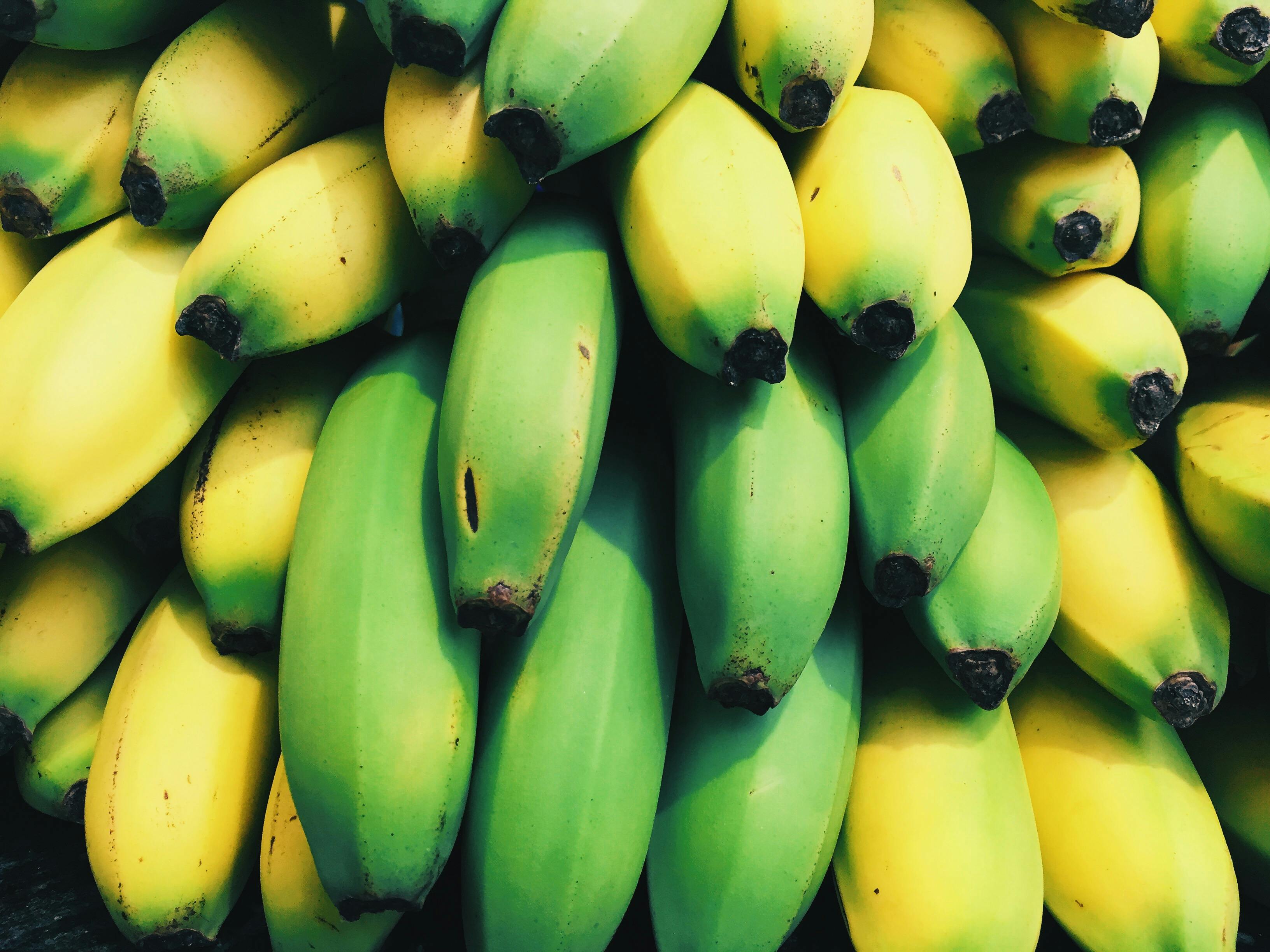Key Takeaways
- Origin in Southeast Asia: Bananas were first cultivated around 5000 BCE in Southeast Asia, becoming a staple through diverse agricultural practices.
- Spread via Ancient Trade Routes: Established routes like the Silk Road and maritime pathways facilitated the introduction of bananas to South Asia by 300 BCE.
- Cultural Integration in South Asia: In South Asia, bananas became essential in daily life, traditional cuisines, and religious ceremonies.
- Adoption in the Middle East and Mediterranean: By the first millennium CE, bananas were successfully cultivated in the Middle East and Mediterranean, adapting to arid climates with advanced irrigation techniques.
- Economic Significance: Bananas served as a valuable trade commodity, boosting economies and fostering trade relationships across ancient civilizations.
- Diverse Ancient Varieties: Various banana types were cultivated to suit different regional environments, enhancing cultural exchanges and agricultural diversity.

I’ve always been intrigued by bananas—not just for their sweet taste but for their fascinating journey through history. Imagine these vibrant fruits traveling from the warm landscapes of Southeast Asia all the way to the bustling markets of the Mediterranean. It’s a story filled with exploration, trade, and cultural exchange.
As I delved into ancient texts and archaeological findings, I discovered how bananas became a staple in various civilizations long before they were commonplace today. From serving as a valuable trade commodity to influencing local cuisines, bananas played a pivotal role in connecting diverse cultures. Join me as we explore the incredible voyage of bananas in ancient times and uncover the impact they had on societies across continents.
Origins Of Bananas In Southeast Asia
I find it fascinating that bananas originated in Southeast Asia, a region rich in biodiversity and cultural heritage. Archaeological evidence suggests that banana cultivation began around 5000 BCE in Papua New Guinea. From there, bananas spread to the Philippines, Indonesia, and other parts of mainland Southeast Asia.

Bananas belong to the genus Musa, and there are over 1,000 varieties cultivated in this region. These varieties vary in size, flavor, and texture, catering to diverse culinary uses. For example, the Musa acuminata species produces sweet bananas commonly eaten fresh, while the Musa balbisiana is used in cooking and brewing.
The warm, tropical climate of Southeast Asia provides ideal conditions for banana growth. Consistent rainfall and fertile volcanic soil contribute to the robust production of banana plants. Farmers traditionally use sustainable practices, such as intercropping with other plants like taro and sugarcane, to maintain soil health and maximize yield.
Bananas played a significant role in the local economies of ancient Southeast Asian societies. They served as a staple food source and were integral to various cultural rituals and festivals. Additionally, bananas were among the early trade commodities, exchanged between neighboring regions and contributing to the flourishing of ancient trade routes.
Today, the legacy of banana cultivation in Southeast Asia continues. Modern agricultural techniques have enhanced productivity, while traditional methods preserve the genetic diversity of banana varieties. This rich history not only highlights the importance of bananas in ancient times but also underscores their enduring significance in the region’s culture and economy.
The Spread Of Bananas To South Asia
I explore how bananas reached South Asia through established trade networks, expanding their cultivation and use.
Trade Routes And Exchange
Ancient trade routes, including the Silk Road and maritime pathways, introduced bananas to South Asia. Merchants transported banana plants and seeds, enabling their adaptation to diverse climates in regions like India and Sri Lanka. By 300 BCE, bananas integrated into local agriculture, enhancing food security and economic stability.
| Region | Time Period | Trade Route |
|---|---|---|
| India | 300 BCE | Maritime routes |
| Sri Lanka | 300 BCE | The Silk Road |
| Southeast Asia | Continued | Regional exchanges |
Cultural Integration
In South Asia, bananas became integral to daily life and cultural practices. They feature in religious ceremonies and traditional cuisines, underscoring their significance. Banana leaves serve as eco-friendly plates in many South Asian dishes. Additionally, banana-based recipes, such as banana curry and payasam, demonstrate the fruit’s versatility and cultural importance.
Bananas In The Middle East And Mediterranean
Exploring the journey of bananas into the Middle East and Mediterranean reveals fascinating agricultural and economic developments.
Agricultural Adoption
Bananas found fertile ground in the Middle East and Mediterranean by the first millennium CE. Farmers adapted cultivation techniques to suit arid climates, implementing irrigation systems to support banana plantations. Regions like Egypt and the Levant became prominent banana producers, leveraging greenhouse technologies to extend growing seasons. The introduction of disease-resistant banana varieties enhanced productivity, ensuring a stable supply for local consumption and export.
Economic Impact
Bananas significantly influenced the economies of the Middle East and Mediterranean. They became a valuable export commodity, fostering trade relationships with regions in Africa and Europe. By the 10th century, banana trade routes expanded, contributing to the prosperity of port cities such as Alexandria and Antioch. The demand for bananas stimulated the development of marketplaces and trading hubs, creating jobs and boosting local economies. Additionally, bananas featured prominently in regional cuisines, increasing their market value and cultural significance.
Varieties Of Ancient Bananas

Ancient civilizations cultivated diverse banana varieties tailored to their environments and needs. In Southeast Asia, Cavendish-type bananas thrived due to the region’s humid climate and fertile soil. These bananas featured thick skins and sweet flesh, making them ideal for fresh consumption and trade.
In South Asia, Plantain bananas dominated agricultural landscapes. Their starchy texture suited cooking methods, such as frying and boiling, integral to traditional dishes like banana curry and payasam. Plantains also provided a reliable food source during agricultural cycles.
The Mediterranean introduced Dwarf banana varieties, adapted to cooler climates and limited space. These smaller plants produced manageable harvests, supporting local economies in port cities like Alexandria. Dwarf bananas offered a balance between yield and resilience against pests and diseases common in arid regions.
Middle Eastern growers favored Red bananas, recognized for their vibrant skin and unique flavor. These varieties contributed to diverse culinary practices and enhanced the aesthetic appeal of local markets. Red bananas also served as valuable export commodities, strengthening trade relationships with Europe and Africa.
| Banana Variety | Region | Characteristics | Uses |
|---|---|---|---|
| Cavendish-type | Southeast Asia | Thick skin, sweet flesh | Fresh consumption, trade |
| Plantain | South Asia | Starchy texture, larger size | Cooking, staple food |
| Dwarf bananas | Mediterranean | Smaller plants, manageable harvests | Local consumption, export |
| Red bananas | Middle East | Vibrant skin, unique flavor | Culinary diversity, export |
These ancient banana varieties not only supported local populations but also facilitated cultural exchanges across regions. Their adaptability and economic value underscored bananas’ role as a cornerstone in the development of early agricultural societies.
Conclusion
Seeing how bananas traveled from Southeast Asia to the Mediterranean really highlights their unique role in history. I love how they became more than just a food source, influencing traditions and building connections between different cultures. It’s amazing to think about their lasting impact on economies and daily life across so many regions. This journey makes me appreciate bananas not only for their taste but also for their significance in our shared heritage.

Frequently Asked Questions
What is the historical significance of bananas?
« The Origins of Bananas: Tracing Back to Prehistory and Their Global Journey
The Banana Trade Route: How Bananas Traveled the World and Shaped Our Diets »
Bananas have played a crucial role in the development of various civilizations. Originating in Southeast Asia, they became a staple food, influenced local cuisines, and fostered cultural exchanges. As bananas spread through ancient trade routes, they enhanced food security and economic stability in regions like South Asia and the Mediterranean, making them a valuable commodity in historical trade networks.
Where were bananas first cultivated?
Bananas were first cultivated in Southeast Asia, specifically around Papua New Guinea, around 5000 BCE. The region’s warm, tropical climate provided ideal conditions for banana growth. Over time, more than 1,000 varieties emerged, each suited to different culinary and agricultural needs, establishing bananas as a vital food source and economic staple in early societies.
How did bananas spread from Southeast Asia to other regions?
Bananas spread from Southeast Asia to other regions through established ancient trade networks, including the Silk Road and maritime pathways. By 300 BCE, they reached South Asia, integrating into local agriculture in countries like India and Sri Lanka. Later, bananas traveled to the Middle East and the Mediterranean, facilitated by traders and adapting cultivation techniques to diverse climates, which expanded their global presence.
What role did bananas play in South Asian cultures?
In South Asia, bananas became integral to daily life and cultural practices. They enhanced food security and economic stability by being a reliable staple. Bananas are featured in religious ceremonies, traditional cuisines, and are used creatively in recipes like banana curry and payasam. Additionally, banana leaves serve as eco-friendly plates, showcasing the fruit’s versatility and cultural importance in the region.
How did bananas influence the Mediterranean economy?
In the Mediterranean, bananas became a valuable export commodity by the first millennium CE. Farmers adapted cultivation techniques to arid climates, using irrigation and greenhouse technologies to boost production. The banana trade fostered strong economic relationships with Africa and Europe, contributing to the prosperity of port cities like Alexandria and Antioch and increasing the fruit’s market value and cultural presence in regional diets.
What are some ancient banana varieties?
Ancient civilizations cultivated diverse banana varieties tailored to their environments. Southeast Asia favored Cavendish-type bananas for their sweet flesh and thick skins, suitable for trade and fresh consumption. South Asia predominantly grew Plantain bananas, ideal for cooking. The Mediterranean developed Dwarf varieties adapted to cooler climates, while the Middle East preferred Red bananas for their unique flavor and vibrant appearance, supporting diverse agricultural needs and cultural exchanges.
How have banana cultivation practices evolved over time?
Banana cultivation has evolved by blending traditional methods with modern agricultural techniques. Early practices focused on local varieties and manual farming, while today, advancements include irrigation systems, greenhouse technologies, and the development of disease-resistant strains. These innovations have maintained genetic diversity and increased productivity, ensuring bananas remain a vital crop for global food security and economic stability.













